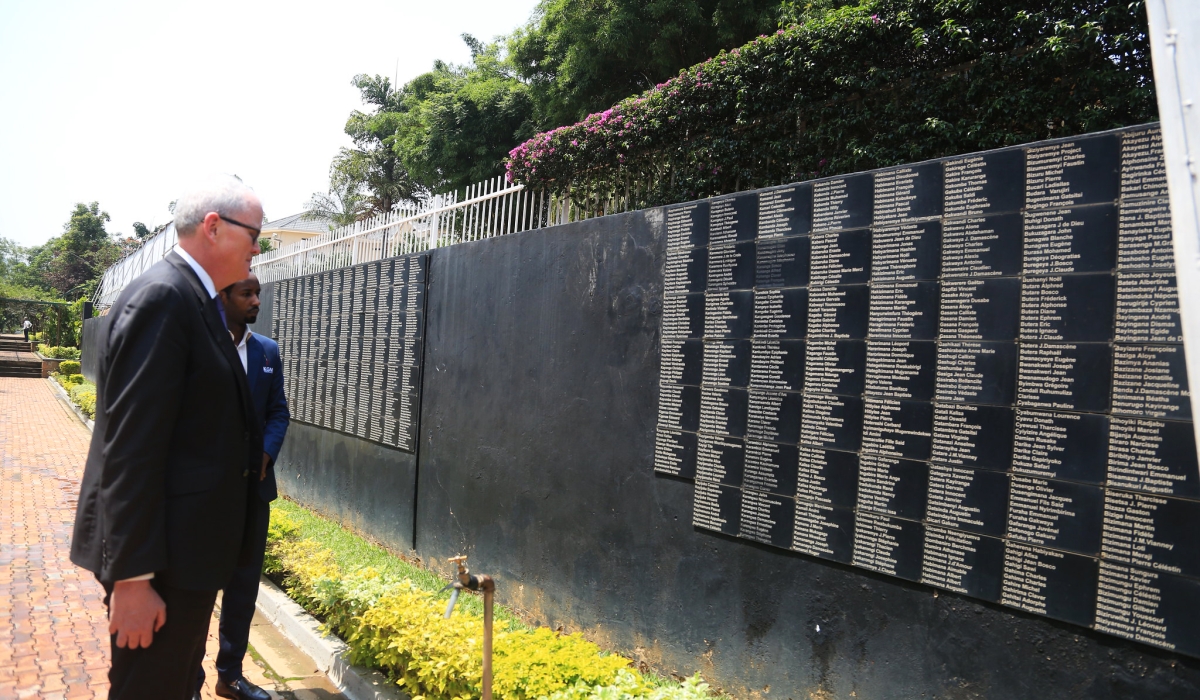Regional
Kwibuka 30: UN troops abandoned the Tutsi to mass murderers

Three
decades ago, Rwanda witnessed one of the world’s most tragic genocides of the
20th Century. The 1994 Genocide against the Tutsi in Rwanda claimed the lives
of more than one million people in only 100 days.
On
April 7, Rwanda starts commemoration activities for the 1994 Genocide against
Tutsi.
The
United Nations had a peacekeeping mission in the east African country at the
time. But what happened was beyond imagination. UN troops withdrew when they
were most needed, leaving the Tutsi in the hands of the mass murderers.
In
1993, the UN deployed to Rwanda a peacekeeping mission referred to as the
United Nations Assistance Mission for Rwanda (UNAMIR), with a mandate to
oversee the implementation of the Arusha peace Accords.
The
Arusha Accords were a set of five accords signed between the then Rwandan
Government and the Rwandan Patriotic Front (RPF) in Arusha, Tanzania, on August
4, 1993. It was under mediation, to end a then three-year war.
With
an approximate 2,500 peacekeepers, UNAMIR was supposed to oversee the
implementation of the Arusha Accords.
However,
the UN troops withdrew in April 1994, and abandoned the Tutsi to be killed
massively, in broad daylight.
Following
the crash of the plane carrying President Juvenal Habyarimana on April 6, the
Hutu hunted and massacred the Tutsi. It was the time to execute the long
planned plot of exterminating the Tutsi in Rwanda.
As the
mass killings began, the UN ordered its troops to evacuate foreigners – but not
intervene to save any Tutsi civilian.
The
1999 UN report assessing the Rwanda deployment called the mission disgraceful
for abandoning the Tutsi in schools and other supposed safe zones they had
created.
“Troops
were withdrawn when they were most needed,” said former UN chief Ban Ki-moon in
2014. “We should have done much more.”
According
to Alain Destexhe, a liberal-conservative Belgian politician, one of the most
dramatic examples of the UN's abandonment of populations in danger of death
took place at ETO Kicukiro (former Don Bosco Official Technical School).
Around
3,000 Tutsi took refuge there believing they were under the protection of
Belgian contingents. A company of 90 Belgian soldiers in the UN mission, under
command of Captain Lemaire, was stationed at ETO Kicukiro. However, the
peacekeepers departed on April 11, leaving the Tutsi to be mercilessly
massacred by government forces and Interahamwe militia.
The
Interahamwe had surrounded the school threatening to jump the fence, showing
their weapons, and screaming their hatred of the Tutsi, calling them
“cockroaches”.
The
same day, Lemaire received the order to evacuate the cantonment in order to
regroup Belgian forces around Kigali airport.
When
the Belgian column moved, the refugees run all around imploring: "Don't
abandon us. The militia are going to kill us. The soldiers are just waiting for
that. Save us, don't abandon us, we are all going to be killed. Some clung to
jeeps and trucks. The peacekeepers shot into the air. Believing that they are
shooting at us, we scattered in all directions,” said one of the survivors.
As the
vehicles moved off they collided with refugees who blocked the entrance.
Realizing their abandonment, some lied down on the ground, across the trucks,
but were quickly dispersed by shots in the air.
The
Interahamwe and Rwandan soldiers who surrounded the school were just waiting to
seize the moment. Immediately, they invaded the ETO compound through another
entrance, while the Tutsi could still see the cloud of dust raised by the
passage of vehicles used by UNAMIR.
The
refugees were completely unarmed, unable to put up the slightest resistance to
men armed with guns and machetes. The killers started beating them with rifle
butts, knives and sticks.
The
refugees were then forced to undertake a death march of several kilometers,
surrounded by militiamen and soldiers who robbed them along a road populated by
the Hutu who mocked them, screaming and predicting death.
“We
were surrounded on all sides. There were the Interahamwe, the army and, it
seemed, all the Hutu in the world. They insulted us all the way. Once again,
several dozens were cut, mutilated or killed during this ordeal,” said another
survivor.
“They
beat us all the way. Corpses littered the road. We felt like we were going to
die from the way they beat us throughout our journey to death. We were
surrounded. Behind, to the right, to the left, everywhere, it was crowded with
soldiers, Interahamwe and civilians. Children, women, young people, it was as
if all the Hutu in the world had come to exterminate us.”
The
Belgian soldiers left the school at 2 pm, at around 5 pm survivors arrived at
the top of Nyanza hill where the number of killers had multiplied nearly
twenty-fold.
According
to survivors interviewed by African Rights, for a short while, nothing
happened. Then, again, those with rifles and grenades took up positions on the
embankment while those armed with machetes and clubs took up positions below.
Together they formed a belt around the Tutsi. A few minutes later, the massacre
began. They started shooting at the Tutsi and the grenades kept raining.
An
order was given to save bullets and kill them using traditional weapons;
machetes, axes, sticks, and clubs.
Militiamen,
skilled at killing innocent victims, were much less skilled when it comes to
fighting against armed adversaries. Fearing the arrival of the RPF-Inkotanyi,
they left around 8 pm, after three hours of murderous orgy, while dozens,
perhaps hundreds, of the tortured died under mountains of corpses.
Another
survivor said that it had rained, and it was already starting to get dark. This
is what saved those who were still alive that day. The night would, in fact, be
the salvation of some survivors.
The
following morning, Interahamwe militia returned to check whether any Tutsi was
still alive, by standing on their bellies to see if they would be breathing.
Some survivors, lying among the corpses were saved by the arrival of the RPF in
Nyanza on April 12, 1994.
Most
of the refugees at ETO would not have gone there if they did not believe that
the UN troops would save them.








